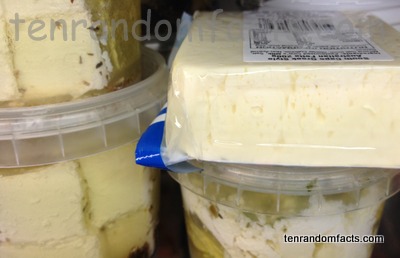Things can’t get cheesier without feta.
- Feta is a variant of cheese made from the milk of either sheep or goats, or most commonly both, although sometimes cow’s milk is substituted.
- The term ‘feta’ comes from the Greek word with the same spelling, or alternatively ‘pheta’, and can be translated as ‘slice’.
- Feta is a white pickled cheese, made from curd that has been drained, cut and salted, immersed in brine and aged for a period of time.
- Feta was made and consumed in Ancient Greece, and the cheese was mentioned in the 700s BC famous poem of the era, Odyssey.
- It can take three months or more for feta to fully age, in a combination of refrigerated and room temperatures, and it needs to be stored in a mild brine solution so that it does not dry out.
- The flavour of feta is typically a mix of sour, tangy and salty, and it is sometimes flavoured with oil, herbs and spices, or other ingredients.
- There are regulations in place for commercial feta as a ‘protected designation of origin’ product, and to be called such in the European Union, it must be made of at least 70 percent sheep’s milk, and made from animals raised in particular areas of Greece.’
- Feta can come in both soft and firm varieties, with the former generally more inexpensive but of a lesser quality, and the firmer cheese usually has more holes and a crumblier texture.
- Feta is commonly added to a dish for flavour, and it is eaten in salads; served with olives and oil; cooked in pies, grills, and omelettes; and also used in sandwiches.
- Feta is very high in riboflavin, sodium, calcium, phosphorus and fat, and is a good source of vitamin B12 and protein.
Bibliography:
Feta, 2015, Cheese.com, http://www.cheese.com/feta/
Feta, 2015, New England Cheese Making, http://www.cheesemaking.com/Feta.html
Feta, 2015, Wikipedia, https://en.wikipedia.org/wiki/Feta







